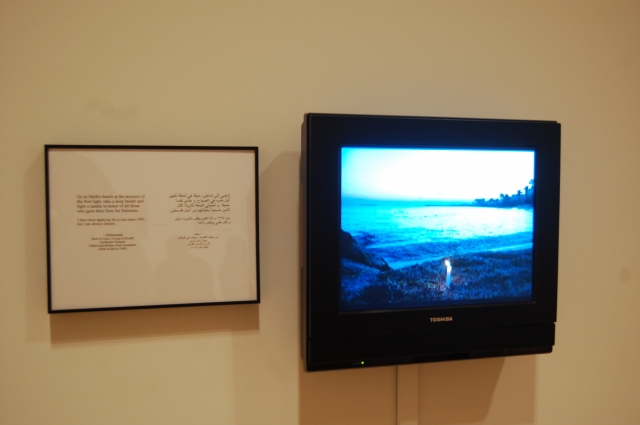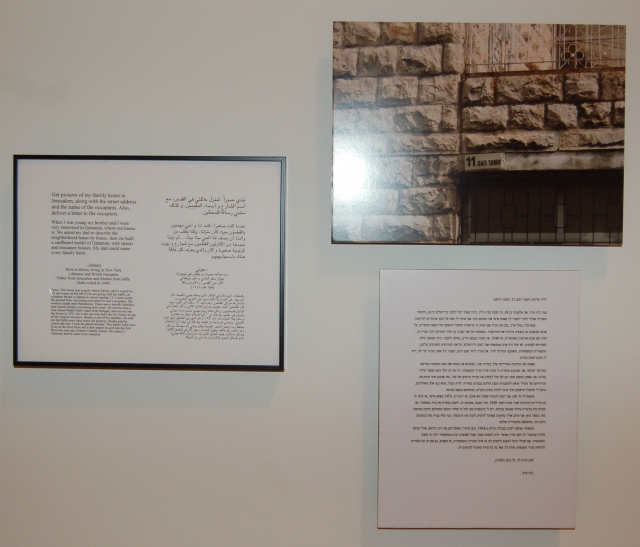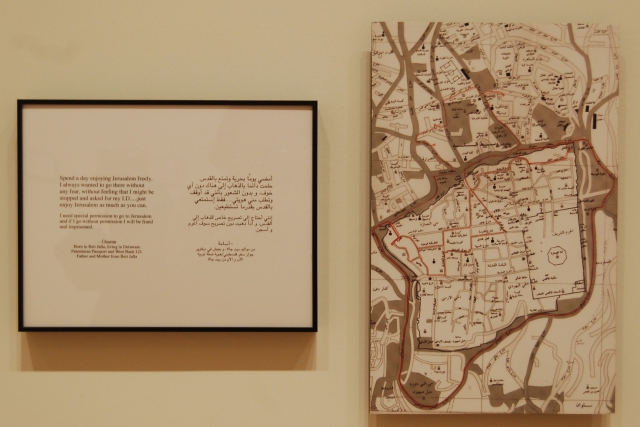From the Open-Publishing Calendar
From the Open-Publishing Newswire
Indybay Feature
Emily Jacir, “Where We Come From”, Showing at the SF MOMA
In a small room in the SF MOMA museum, as part of an exhibit about passages and memory, photographs from Palestine are presented. The title of the photo display is “where we come from” and it’s a representation of interviews the artist Emily Jacir did with Palestinians in the Diaspora and Palestine. Jacir asked her interviewers to answer the question “if I could do anything for you, anywhere in Palestine, what would it be?”
The wishes are mixed and Jacir follows them and takes pictures of the objects of their desire. In one she is asked to water a tree in village that had been demolished in the Nakba of 1948. In another she is asked by a Palestinian refugee to light a candle in Haifa, the town from which the person’s family was exiled. Some requests do not stop at a symbolic act, and the subject asks Jacir to do basic things such as paying the gas bill or visiting a love one; things that are impossible for those living under the Israeli apartheid rule.
Jacir photo-essay breaks away from the very abstract notion of “memory and passages”, and in general from the rest of the exhibit. Unlike other art display surrounding “where we come from”, this show cannot attempt to evoke a personal experience that everyone can sense. None of the visitors at that weekend showing had ever been to Palestine, and none have ever felt what it means to be disposed, uprooted, and to have ones mobility confined. Jacir’s show deepens the understanding of memory and passages in its very personal and traumatic stories of the Palestinian Diaspora (and Palestinians in general). However, despite people’s inability to experience the oppression of the subjects, by evoking the simple requests of those who are oppressed, Jacir allows the viewer to relate and overcome this contradiction.
The wishes are mixed and Jacir follows them and takes pictures of the objects of their desire. In one she is asked to water a tree in village that had been demolished in the Nakba of 1948. In another she is asked by a Palestinian refugee to light a candle in Haifa, the town from which the person’s family was exiled. Some requests do not stop at a symbolic act, and the subject asks Jacir to do basic things such as paying the gas bill or visiting a love one; things that are impossible for those living under the Israeli apartheid rule.
Jacir photo-essay breaks away from the very abstract notion of “memory and passages”, and in general from the rest of the exhibit. Unlike other art display surrounding “where we come from”, this show cannot attempt to evoke a personal experience that everyone can sense. None of the visitors at that weekend showing had ever been to Palestine, and none have ever felt what it means to be disposed, uprooted, and to have ones mobility confined. Jacir’s show deepens the understanding of memory and passages in its very personal and traumatic stories of the Palestinian Diaspora (and Palestinians in general). However, despite people’s inability to experience the oppression of the subjects, by evoking the simple requests of those who are oppressed, Jacir allows the viewer to relate and overcome this contradiction.
Add Your Comments
We are 100% volunteer and depend on your participation to sustain our efforts!
Get Involved
If you'd like to help with maintaining or developing the website, contact us.
Publish
Publish your stories and upcoming events on Indybay.
Topics
More
Search Indybay's Archives
Advanced Search
►
▼
IMC Network





